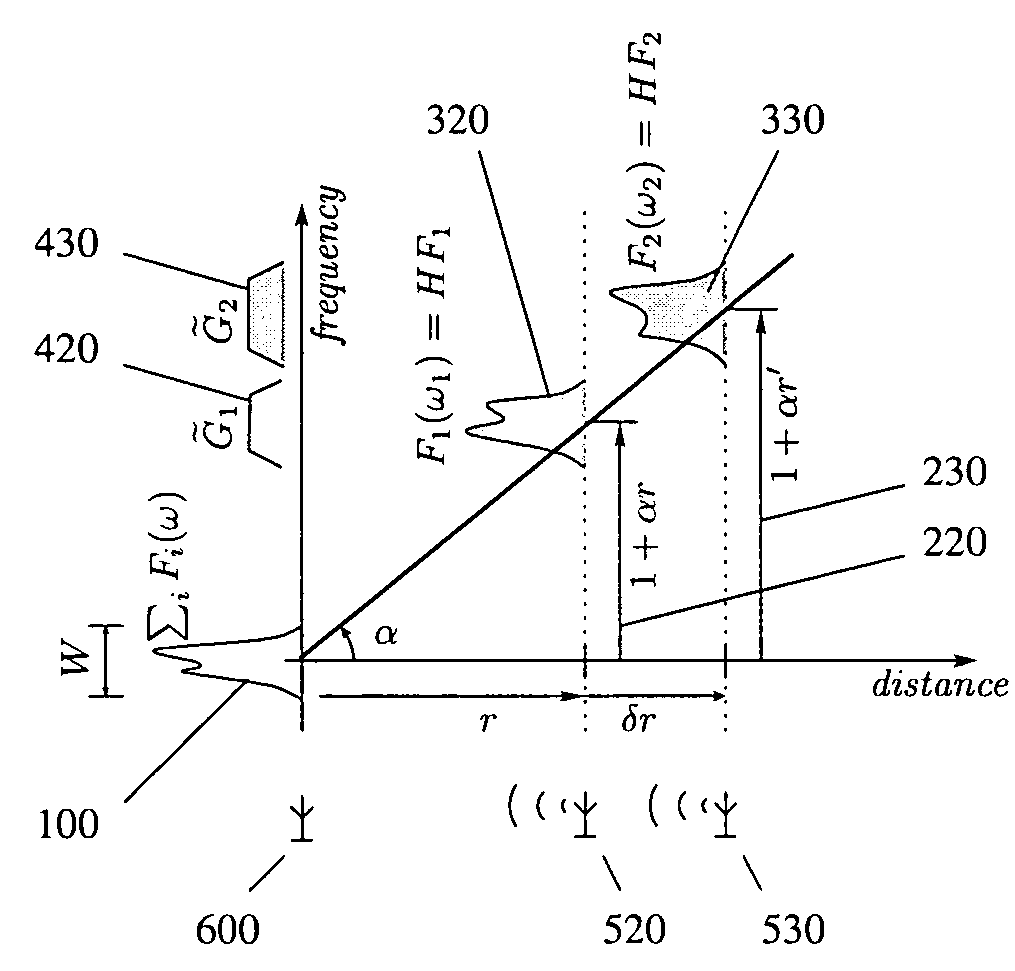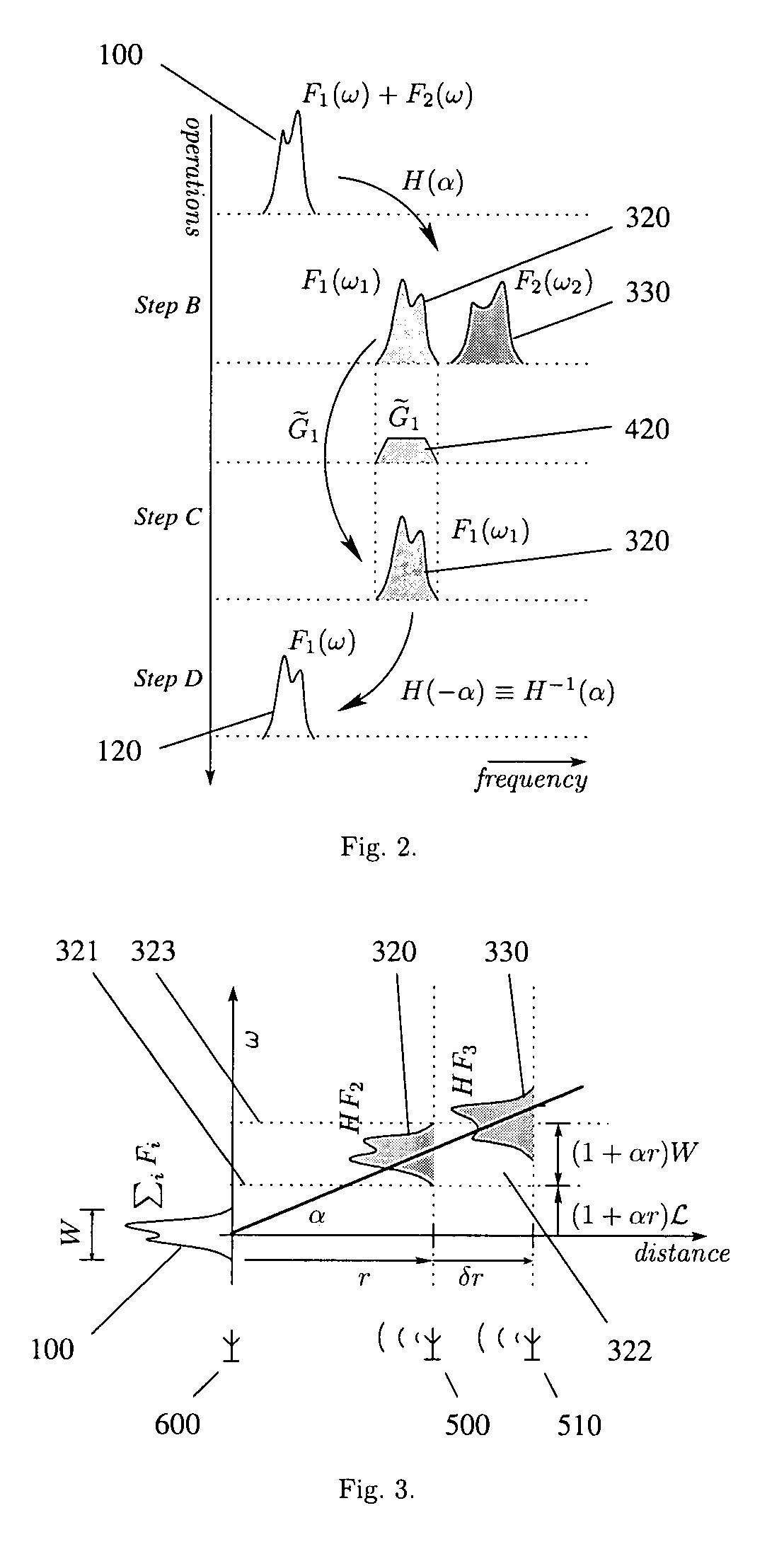Distance division multiplexing
a technology of distance division and multiplexing, applied in the field of communication of information, can solve the problems of general unobvious how any form of distance determination could help, and the current technology is especially worse off, and is useless for separation itsel
- Summary
- Abstract
- Description
- Claims
- Application Information
AI Technical Summary
Benefits of technology
Problems solved by technology
Method used
Image
Examples
Embodiment Construction
[0081]FIG. 1 illustrates the inventive procedure for separating signals received from sources at different distances from the receiver, using a graph of the spectral shift as a function of distance. Incoming signals of spectra F(w) and F′(w), from sources [520] and [530] at distances r and r′=r+δr, respectively, from the receiver [600] located at the origin of the graph are assumed to ordinarily occupy the same frequency band W. The two signals would ordinarily be received together as the combined signal ΣjFj(w)≡{Fj} [100] and interfere with each other's reception at the receiver.
[0082]By applying Step B of the inventive procedure as given in the Summary, the receiver causes the spectra of these component signals to be shifted in proportion to the source distances using the method described in the copending application, i.e. by frequency factors (1+αr) [220] and (1+αr′) [230]. The component spectra then occupy the shifted bands F1(w1)≡H(α)F1(w)≡HF1 [320] and F2(w1)≡H(α)F2(w)≡HF2 [33...
PUM
 Login to View More
Login to View More Abstract
Description
Claims
Application Information
 Login to View More
Login to View More - R&D
- Intellectual Property
- Life Sciences
- Materials
- Tech Scout
- Unparalleled Data Quality
- Higher Quality Content
- 60% Fewer Hallucinations
Browse by: Latest US Patents, China's latest patents, Technical Efficacy Thesaurus, Application Domain, Technology Topic, Popular Technical Reports.
© 2025 PatSnap. All rights reserved.Legal|Privacy policy|Modern Slavery Act Transparency Statement|Sitemap|About US| Contact US: help@patsnap.com



